Hello, I’m Michael Zhang, a seasoned Chinese traveler who has explored countless mountains around the world. Yet, among all the peaks I’ve visited, Mount Song (Songshan) holds a special place in my heart. It represents the very soul of Chinese mountain culture — where history, philosophy, and nature converge. Every climb here feels like a dialogue with ancient minds, a moment where one’s spirit blends with the rhythms of nature.
In this guide, I’ll take you deep into the heart of Mount Song, unveiling its cultural richness, scenic beauty, and practical travel insights to help you experience one of China’s most profound sacred mountains.
Summary
Mount Song Overview
Mount Song, known as the Central Peak of China’s Five Great Mountains, stands alongside Mount Tai, Mount Hua, Mount Heng (in Shanxi), and Mount Heng (in Hunan). Throughout history, emperors, poets, monks, and martial arts masters have all journeyed here, leaving behind countless cultural relics.
The mountain range is composed of two main ridges — Taishi Mountain and Shaoshi Mountain (home to the world-famous Shaolin Temple). Mount Song has 72 peaks, with 36 on each ridge. The highest summit, Junji Peak, reaches 1,491.73 meters above sea level.
The Mount Song Scenic Area consists of Shaolin, Songyang, and Zhongyue sub-areas. The Shaolin Scenic Area holds the status of a 5A National Tourist Attraction, while Songyang and Zhongyue are classified as 4A. If your goal is to hike, head to the Songyang Scenic Area, known locally as Taishi Mountain.
- Address: No.146 Zhongyue Street, Dengfeng, Zhengzhou, Henan (Apple Maps / Amap)
- Opening Hours: 8:00 AM – 4:30 PM
- Virtual Tour:Experience in VR
- Suggested Duration: 5–8 hours
- Best Seasons: All year round (Winter hikes take around 8 hours but reward you with snow-covered peaks.)
- Ticket Price: Songyang Hiking Pass – 79.9 CNY
- Buy Tickets:Trip.com Discounts
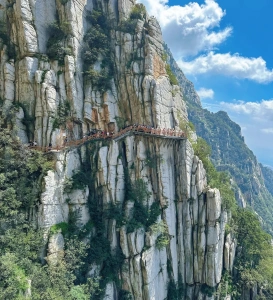
Mount Song Map
Below is the guide map for the Shaolin Scenic Area and Songyang Scenic Area.
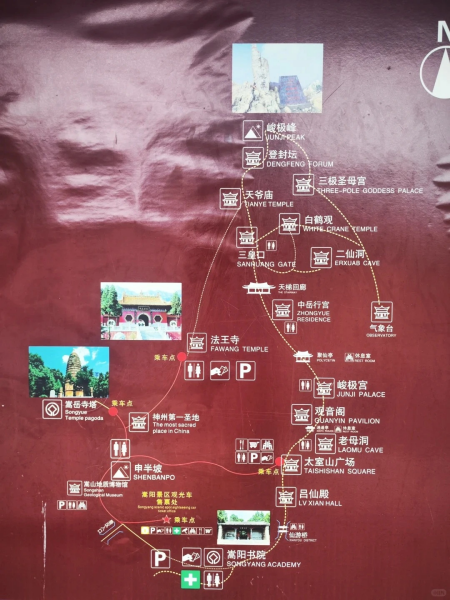
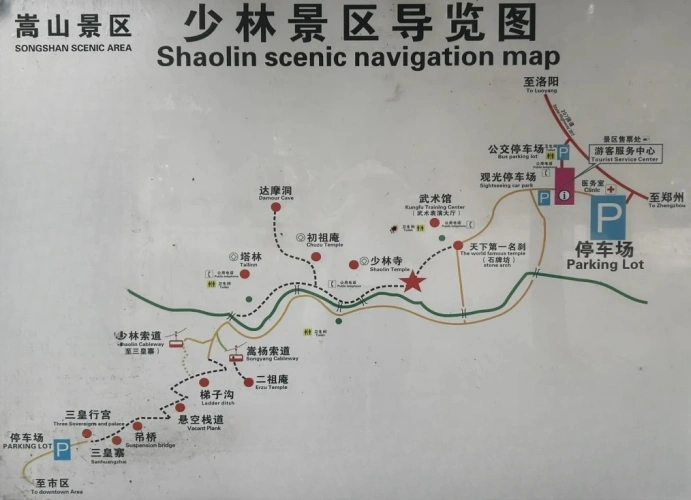
Why You Should Visit Mount Song
Profound Historical Heritage
Mount Song is home to some of China’s oldest architectural wonders, including the Songyue Temple Pagoda, built during the Northern Wei Dynasty — the oldest surviving brick pagoda in China. You’ll also find the Three Han Que Gates (Taishi Que, Shaoshi Que, and Qimu Que), ancient stone gates carved with vivid reliefs that depict life and rituals from over a millennium ago. These sites, all designated National Key Cultural Relics, embody the deep continuity of Chinese civilization.
Harmony of Three Teachings
What makes Mount Song extraordinary is the peaceful coexistence of Buddhism, Taoism, and Confucianism in one sacred landscape. You can visit the Shaolin Temple, the largest surviving Buddhist monastery in China; explore the Zhongyue Temple, a Taoist sanctuary dedicated to the “God of the Central Peak”; and walk through Songyang Academy, one of China’s oldest Confucian academies. For over a thousand years, the sound of temple bells, chanting monks, and scholars reciting Confucian texts have interwoven here, forming a rare spiritual harmony found nowhere else in the world.
Unique Natural Landscape
The Sanhuang Village (Three Emperors Fortress) in the Shaolin Scenic Area is famed for its dramatic cliffs and rugged trails. In October, the slopes burst into fiery red hues as autumn leaves blanket the valley. Meanwhile, Junji Peak — the main summit of Taishi Mountain — rises to 1,491 meters. The hiking route combines stunning nature with historic relics, offering a rewarding journey through both landscape and legacy. Whether you seek adventure, photography, or reflection, Mount Song offers a rare mix of serenity and grandeur.
Top Things to Do in Mount Song
Main Attractions
Mount Song consists of three major scenic areas — the Shaolin Scenic Area, the Songyang Scenic Area, and the Zhongyue Scenic Area. Each offers a distinct experience: the Shaolin area is famous for its Buddhist temples and martial arts; Songyang is known for its Confucian heritage and ancient academies; and Zhongyue preserves grand Taoist shrines and imperial history.
Shaolin Temple
The Shaolin Temple is the most iconic site in Mount Song and one of the most important symbols of Chinese Buddhism. Founded in 495 AD during the Northern Wei Dynasty, this ancient monastery lies deep within the pine forests of Shaoshi Mountain. Shaolin is not only the birthplace of Chan (Zen) Buddhism but also the cradle of Chinese Kung Fu.
Visitors can explore grand halls such as the Mahavira Hall, Changzhu Courtyard, and Lixue Pavilion, all showcasing ancient architecture and religious artistry. Don’t miss the Shaolin monks’ live Kung Fu performances, which perfectly capture the temple’s spirit — the unity of meditation and martial discipline.
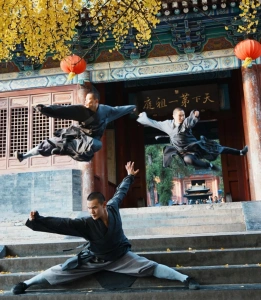
Sanhuang Village (Three Emperors Fortress)
Hidden deep in the Shaolin Scenic Area, Sanhuang Village is often called “the most dramatic and dangerous spot in Mount Song.” The steep trails lead to breathtaking views over the Shaolin Temple complex, often shrouded in mist and clouds.
The name “Sanhuang” refers to Fuxi, Shennong, and the Yellow Emperor, legendary figures in Chinese mythology who were said to have worshipped here. Today, the hiking route includes suspension bridges and mountain plank paths surrounded by rugged cliffs and whispering pines. For photographers and adventurers, this is one of Mount Song’s most rewarding trails.
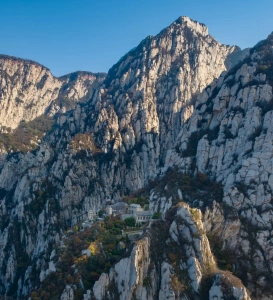
Songyang Academy
Located in the Songyang Scenic Area, Songyang Academy is one of China’s Four Great Ancient Academies, alongside Yuelu, Bailudong, and Yingtian Academies. It dates back to the Northern Wei Dynasty and reached its peak during the Tang and Song periods when Neo-Confucian scholars like Cheng Hao and Cheng Yi lectured here.
The academy’s courtyard is shaded by towering Han cypress trees, some over 2,000 years old, known collectively as the “Three Wonders of Songyang.” Walking among them, you can almost imagine the voices of scholars reciting the Analects. For travelers interested in history and philosophy, this is one of Mount Song’s most intellectually enriching stops.
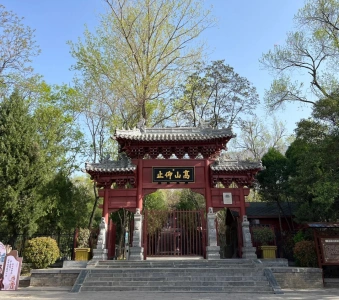
Taishi Mountain (Junji Peak)
Taishi Mountain, also called Junji Peak, is the main summit of Mount Song, standing 1,491 meters above sea level and traditionally known as “the center of heaven and earth.” Its steep cliffs and sweeping ridgelines make it one of China’s classic hiking destinations.
The trail starts from the Songyang Scenic Area and takes about 4–6 hours to reach the top. Along the way, you’ll encounter ancient stone carvings and remnants of ritual sites once used for imperial ceremonies. At sunrise, the peak reveals a panorama of Dengfeng City and the vast Songshan range — a paradise for hikers, photographers, and anyone chasing the sublime beauty of nature.
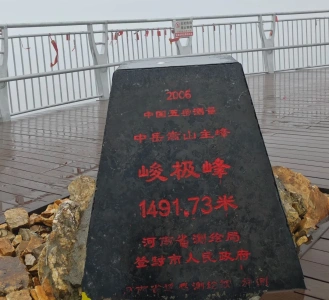
Songyue Temple Pagoda
Within the Songyang Scenic Area lies the Songyue Temple Pagoda, one of the oldest surviving brick pagodas in China. Built during the Northern Wei Dynasty over 1,500 years ago, the pagoda stands 40 meters tall with 13 levels of eaves, a masterpiece of early Chinese Buddhist architecture.
Its circular shape and elegant proportions mark a milestone in East Asian architectural history, and it’s listed as a UNESCO World Heritage Site. Climb up for a panoramic view of the Mount Song peaks — where culture and landscape merge in perfect harmony.
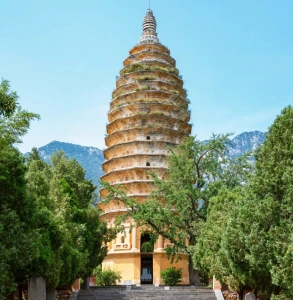
Zhongyue Temple
The Zhongyue Temple, located in the Zhongyue Scenic Area, is a magnificent Taoist complex dedicated to the “Great Deity of the Central Peak.” Originally built during the Qin and Han Dynasties, most of the existing structures date to the Ming and Qing eras.
Covering nearly 100,000 square meters, the temple is often called the “Little Forbidden City of the North” due to its grand courtyards, red walls, and golden roofs. Historically, emperors came here to perform mountain sacrifices, symbolizing reverence to nature and cosmic balance. With its solemn atmosphere and centuries-old cypress trees, Zhongyue Temple remains a vital window into China’s ancient mountain worship traditions.
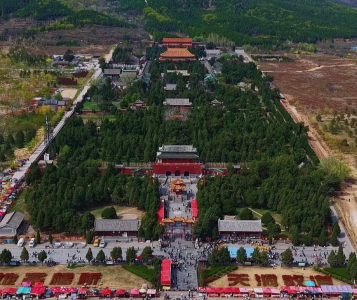
Mount Song Ticket Guide
The Mount Song Scenic Area mainly consists of Songyang (Taishi Mountain) and Shaolin (Shaoshi Mountain) areas. If your goal is to visit the Shaolin Temple, you’ll need a separate ticket for the Shaolin Scenic Area. For hiking enthusiasts, the Songyang Scenic Area is ideal, and the combo ticket offers the best value.
Songyang Scenic Area Combo Ticket
- Includes: Songyang Academy, Fawang Temple, Songyue Pagoda, Laojun Cave, and Taishi Mountain
- Validity: 2 days
- Adults: 79.9 CNY
- Children: 40 CNY (under 18 years old and above 1.4 meters in height)
- Free Entry: Seniors 60+ years old, and children under 1.4 meters
Shaolin Scenic Area Ticket
- Includes: Shaolin Temple Courtyard, Pagoda Forest, Sanhuang Village, Chuzu Nunnery, Erzu Temple, Damo Cave, and the Shaolin Martial Arts Hall
- Validity: Single entry (re-entry requires a new ticket)
- Adults: 80 CNY
- Children: 40 CNY (under 18 years old and above 1.4 meters in height)
- Free Entry: Seniors 60+ years old, and children under 1.4 meters
Where to Buy Tickets
- Online: Available through the WeChat mini program “Manyou Songshan (漫游嵩山)” or on major travel platforms.
- Buy Tickets:Trip.com Discounts
- Offline: Tickets can also be purchased directly at the scenic area ticket offices.
Recommended Mount Song Hiking Routes
The Shaolin Temple route is relatively easy — most attractions are inside the temple complex and clearly marked with signboards. For hiking lovers, Shaoshi Mountain (in the Shaolin area) offers several routes, while Taishi Mountain (in the Songyang area) is more challenging. Below are the most recommended paths:
- Route 1: Visitor Center → Songyang Academy → Taishi Mountain Square → Hike to Junji Peak → Return via same route. Duration: about 4 hours.
- Route 2: Visitor Center → Take the scenic electric shuttle to Taishi Mountain Square → Hike to Junji Peak → Return via same route. Duration: about 3 hours.
- Route 3: Visitor Center → Take the scenic electric shuttle to Taishi Mountain Square → Hike to Junji Peak → Continue to Yixiantian (Heavenly Gap) → Descend via Luya Waterfall Trail. Duration: about 6 hours.
These routes combine ancient monuments, quiet forests, and wide mountain views — a perfect mix for both cultural explorers and outdoor enthusiasts.
Recommended Local Food Around Mount Song
Once you start climbing, there are no restaurants on the mountain, but small local vendors sell water (around 8 CNY per bottle), bread, and grilled sausages along the trail.
If you’re looking for a proper meal, eat near the Visitor Center at the foot of the mountain, where you can find small local restaurants serving noodles and Henan-style dishes.
At Shaolin Temple, don’t miss the vegetarian monks’ meal, known as “Zhai Fan” — a hearty mix of tofu, taro, and stir-fried seasonal vegetables. Served from 12:00 PM to 2:30 PM, priced at 50 CNY.
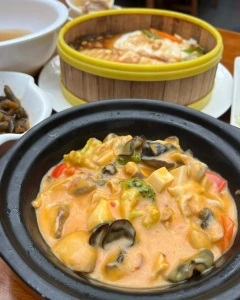
How to Get to Mount Song from Zhengzhou City
The most convenient and popular way to reach Mount Song is by tourist bus, which offers frequent departures and great value for money.
Subway + Tourist Bus
From downtown Zhengzhou, take Metro Line 10 to Zhengzhou Railway Station. Then go to Zhengzhou Central Bus Station, located on the east square opposite the train station. Here, you’ll find two types of tourist buses — one to the Shaolin Scenic Area (buy the ticket labeled “Shaolin Temple”) and another to the Songyang Scenic Area (buy the ticket labeled “Dengfeng Songshan”).
- Departure Times: 07:00, 08:00, 08:50, 09:40, 11:00
- Duration: about 120 minutes
- Fare: 30 CNY to Shaolin Temple, 25 CNY to Songyang Scenic Area
Taxi or Ride-Hailing
Since Mount Song is quite far from downtown Zhengzhou, taking a direct taxi can be expensive. Drivers may charge an additional 80–100 CNY return fee. You’ll need to negotiate the price, which can be inconvenient. If you prefer comfort and flexibility, hiring a private car for the day (around 400 CNY) is a much better option. The service is smoother and allows multiple stops along the way.
How to Get to Mount Song from Zhengzhou Xinzheng International Airport
There is no direct public transport from Xinzheng Airport to Mount Song. You’ll need to transfer in downtown Zhengzhou first, then continue by tourist bus.
Airport Bus + Tourist Bus
From Zhengzhou Xinzheng International Airport, take Airport Bus Line 3 to Zhengzhou Railway Station East Square. Buses run roughly every hour, and the ride takes about 40 minutes, costing 20 CNY.
From there, transfer to the tourist bus at Zhengzhou Central Bus Station (opposite the square). Departure times: 07:00, 08:00, 08:50, 09:40, 11:00. The bus to Mount Song takes about 90 minutes and costs 28 CNY.
- Total travel time: around 2 hours 10 minutes
- Total cost: approximately 48 CNY
How to Get to Mount Song from Luoyang City
Luoyang offers direct bus routes to both Shaolin Temple and the Songyang Scenic Area, making it one of the easiest and cheapest options for travelers based in western Henan.
Bus
You can board from either Luoyang Bus Station or Luoyang Longmen Passenger Center. To visit the Shaolin Scenic Area, simply buy a ticket labeled “Shaolin Temple.” To reach the Songyang Scenic Area, take a bus to Dengfeng Station first (fare 27 CNY), then grab a taxi or rideshare to Songyang.
- Fare: 25 CNY to Shaolin Temple, 27 CNY to Dengfeng
- Tip: Don’t worry about missing your stop — the ticket inspector usually reminds passengers when to get off.
FAQ
Unfortunately, no. Most paths involve long stairways and steep mountain trails, which are not accessible for strollers or wheelchairs.
You can store luggage at the Visitor Center for 15 CNY per day. You’ll receive a claim tag for pickup. Small bags can also be stored in lockers at Taishi Mountain Square, but note that lockers fill up quickly, especially later in the day.

 English (US)
English (US)
 繁體中文
繁體中文 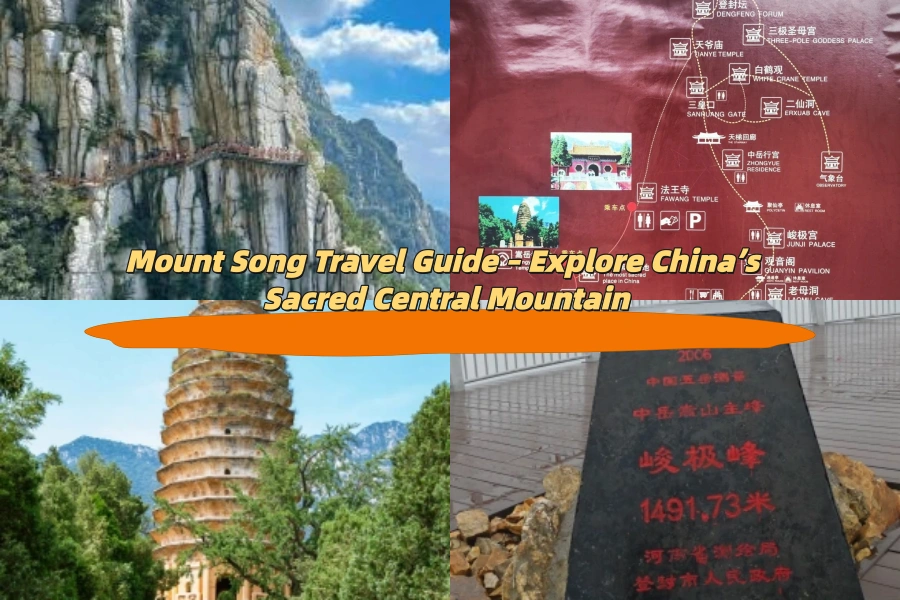
Comment (0)